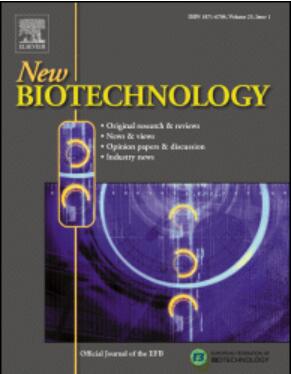Expanding the quorum sensing toolbox: Promoter libraries and hybrid promoter for dynamic genetic circuits
IF 4.9
2区 生物学
Q1 BIOCHEMICAL RESEARCH METHODS
引用次数: 0
Abstract
The interesting features of quorum sensing systems make them very appealing for synthetic biology applications. The first steps have already been taken in characterizing these systems to accelerate their successful implementation. In this work, we explore the next step, tuning. Multiple strategies exist for tuning genetic circuits and quorum sensing systems in general, where the most straightforward solution is to vary the expression level of the synthase or transcription factor. However, these tuning possibilities can be broadened by expanding the variety of quorum sensing-regulated promoters. Here, we expand the range of tuning possibilities by constructing promoter libraries for PlasI (LasI/LasR system) and PesaR/PesaS (EsaI/EsaR system), enabling direct modulation of downstream gene expression levels. Next, the quorum sensing synthetic biology toolbox was further expanded with the creation of a new-to-nature genetic part, the hybrid promoter, which requires two autoinducers for activation, namely 3-oxo-hexanoyl- and 3-oxo-dodecanoyl-homoserine lactone. This promoter was optimized and applied to design a multistage genetic switch capable of creating a growth stage followed by two sequential production stages. Additionally, the circuit was optimized by incorporating the new promoter variants created in this study. This complex genetic circuit demonstrates the true potential of these quorum sensing systems for achieving various cell-density related dynamic circuits.
扩展群体感应工具箱:动态遗传电路的启动子库和混合启动子。
群体感应系统的有趣特性使它们在合成生物学应用中非常有吸引力。已经采取了初步步骤来确定这些制度的特点,以加速其成功实施。在这项工作中,我们探索下一步,调音。一般来说,存在多种策略来调整遗传电路和群体感应系统,其中最直接的解决方案是改变合成酶或转录因子的表达水平。然而,这些调节的可能性可以通过扩大群体感应调节启动子的种类来扩大。本研究通过构建PlasI (LasI/LasR系统)和PesaR/PesaS (EsaI/EsaR系统)启动子文库,扩大了调控的可能性范围,实现了对下游基因表达水平的直接调控。接下来,群体感应合成生物学工具箱进一步扩展,创造了一个新的自然遗传部分,杂交启动子,它需要两个自诱导剂来激活,即3-氧-己醇-和3-氧-十二烷基-高丝氨酸内酯。对该启动子进行了优化,并应用于设计一个多阶段遗传开关,该开关能够创建一个生长阶段,随后是两个连续的生产阶段。此外,该电路通过纳入本研究中创建的新启动子变体进行了优化。这种复杂的遗传电路显示了这些群体感应系统实现各种细胞密度相关动态电路的真正潜力。
本文章由计算机程序翻译,如有差异,请以英文原文为准。
求助全文
约1分钟内获得全文
求助全文
来源期刊

New biotechnology
生物-生化研究方法
CiteScore
11.40
自引率
1.90%
发文量
77
审稿时长
1 months
期刊介绍:
New Biotechnology is the official journal of the European Federation of Biotechnology (EFB) and is published bimonthly. It covers both the science of biotechnology and its surrounding political, business and financial milieu. The journal publishes peer-reviewed basic research papers, authoritative reviews, feature articles and opinions in all areas of biotechnology. It reflects the full diversity of current biotechnology science, particularly those advances in research and practice that open opportunities for exploitation of knowledge, commercially or otherwise, together with news, discussion and comment on broader issues of general interest and concern. The outlook is fully international.
The scope of the journal includes the research, industrial and commercial aspects of biotechnology, in areas such as: Healthcare and Pharmaceuticals; Food and Agriculture; Biofuels; Genetic Engineering and Molecular Biology; Genomics and Synthetic Biology; Nanotechnology; Environment and Biodiversity; Biocatalysis; Bioremediation; Process engineering.
 求助内容:
求助内容: 应助结果提醒方式:
应助结果提醒方式:


